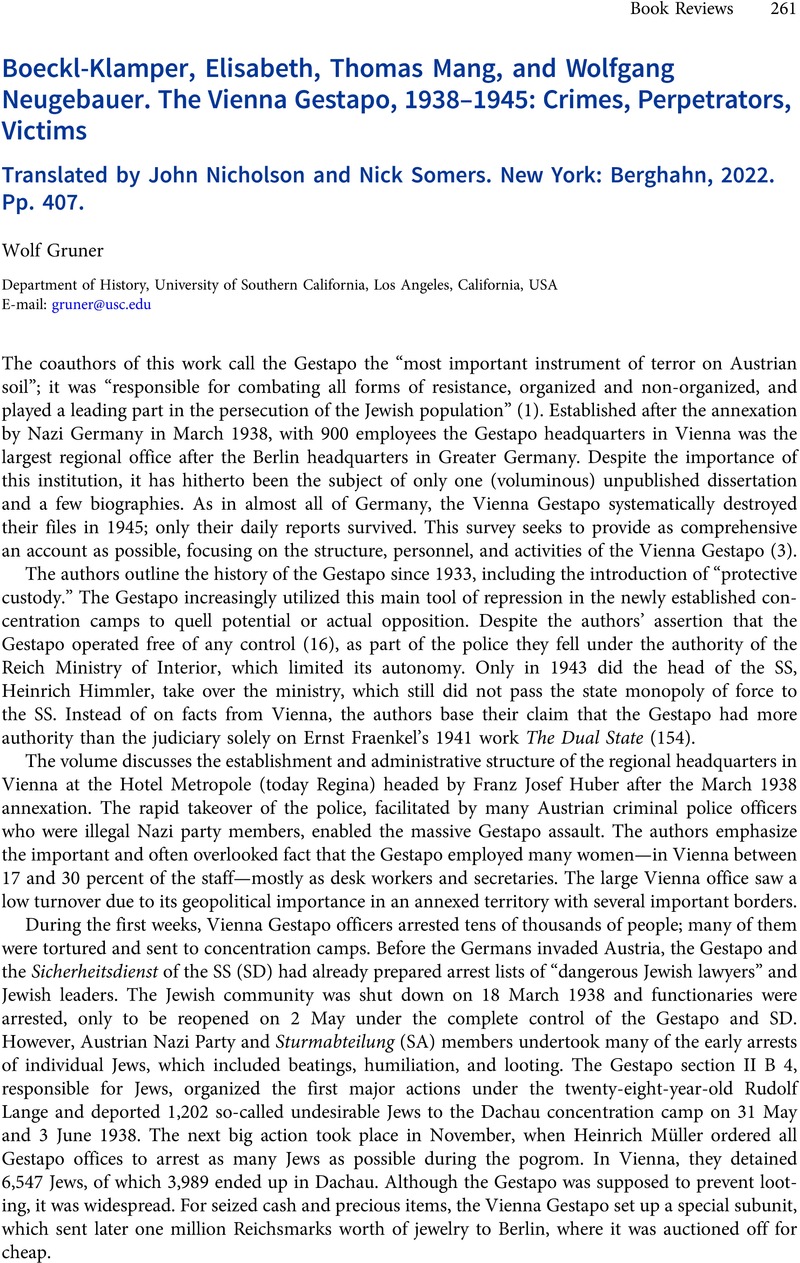No CrossRef data available.
Article contents
Elisabeth Boeckl-Klamper, Thomas Mang, and Wolfgang Neugebauer. The Vienna Gestapo, 1938–1945: Crimes, Perpetrators, Victims Translated by John Nicholson and Nick Somers. New York: Berghahn, 2022. Pp. 407.
Review products
Elisabeth Boeckl-Klamper, Thomas Mang, and Wolfgang Neugebauer. The Vienna Gestapo, 1938–1945: Crimes, Perpetrators, Victims Translated by John Nicholson and Nick Somers. New York: Berghahn, 2022. Pp. 407.
Published online by Cambridge University Press: 12 April 2023
Abstract
An abstract is not available for this content so a preview has been provided. Please use the Get access link above for information on how to access this content.

- Type
- Book Review: Since 1918
- Information
- Copyright
- Copyright © The Author(s), 2023. Published by Cambridge University Press on behalf of the Center for Austrian Studies, University of Minnesota



